
Do’s and Don’ts of Emergency Food Storage

Air. Moisture. Light. Temperature. Life-giving words, right?
Not when it comes to food preservation. Then they become food’s arch enemies. They can turn delicious, nutritious food into a microbial growth nightmare – if we allow them to.
With everything going on these days, proper food storage is more important than ever. We’ve probably all seen shortages at our local stores. We have to make sure we’re storing our emergency food the right way and that it doesn’t go to waste.
Today we’re going to look at some do’s and don’ts regarding emergency food storage.
Different tactics for different foods
First, though, I want to mention this. Not every food item is equally affected by those four food storage enemies.
For example, a leftover piece of meat or fish can be wrapped tightly in plastic wrap or tinfoil. It can then stay good for several days in a refrigerator. And for much longer in a freezer.
A piece of cheese, on the other hand, is better wrapped in a porous material such as parchment paper. That’s because cheese needs some oxygen to stay tasty and “healthy”.
Then there is whole-wheat flour. It shouldn’t sit in a pantry for long because oils in wheat germ will go bad if they’re not kept cool. Place that flour in an airtight container inside a refrigerator and it should last for several months.
Keep unopened butter in a refrigerator and it should stay good for four months. But in a freezer it will last three times that long. Mayonnaise, on the other hand, stays fresher on the inner portion of the door than in the colder, inner part of the fridge.
The Do’s
Depending on how they are worded, almost every “do” can be turned into a “don’t,” and vice versa. But I’ve divided them into these categories for simplicity. Hopefully they’ll be helpful to you.
- Plan your food storage supply carefully. Build a short-term supply quickly and a long-term supply over time.
- Put together meal menus. Start with a week and build up to a month. That way you’ll know which items you’ll need for which day, and you can store them appropriately.
- Store basic ingredients first to ensure food versatility. Such as wheat, flour, grains, beans, rice, pasta, honey, sugar, powdered milk, salt, spices and others. Those items will help you prepare a wide variety of meals.
- Make sure to consider any special dietary needs your family members have when you’re purchasing and storing food.
- Make sure you and your family members enjoy the taste of your supply. We’ll eat anything if we’re hungry enough, but we’ll eat more if we like it.
- Make sure you have enough food in your emergency supply to feed yourself and your family for at least three days. A week to three months would be much better.
- Make sure your family’s emergency food supply is balanced. It should contain enough of the important vitamins, minerals and nutrients your bodies need to get you through a crisis.
- Make sure your emergency food supply is stored in a cool, dark place. That way it won’t be susceptible to sunlight, extreme temperature and critters.
The Don’ts
Here are a few things to avoid when stockpiling food for an emergency.
- Don’t be so concerned about the volume of your long-term stockpile that you neglect nutrition. You’ll need healthy, nutritious food in a crisis.
- Don’t use containers that are not airtight. If air and moisture get in, the food’s shelf life will be greatly decreased. It’s also possible that insects or critters could access the food.
- Don’t store food in places where the chief food enemies can access them. Even light can deplete the vitamin content of food.
- Don’t store too many items that require refrigeration. A lengthy power outage could wipe out that supply unless you are able to run your fridge with a generator.
- Don’t forget about variety. You could live off the same food every day for a while, but you’ll get bored quickly. Food versatility is important. Eating the same thing every day will ruin your taste for that item.
- Don’t forget about comfort foods. Not everything you eat during a crisis needs to be “healthy.” The occasional snack and dessert could be a big psychological lift.
- Don’t forget about expiration dates. Put labels on your containers and eat the oldest items first. If possible, use a rotation system and replace the food you consume with new food.
- Don’t forget to store some food in a secondary location that only you and your family know about.
Short-term vs. long-term
You can differentiate your short-term and long-term food supplies by having three different levels of “defense.”
The first level might consist of frozen foods, cereal boxes, crackers, cheese and similar items. They are foods you could eat for perhaps a week if you were not able to get to a grocery store.
The second level includes other items with a somewhat longer shelf life. Such as canned soup, fruits, vegetables and meats. You could consume these if other food was unavailable due to a crisis.
The third level is for long-term storage. Such as pasta, beans and rice. As well as freeze-dried fruits, vegetables and meats.
Don’t let it go to waste
The last thing you want to do when you’re storing food for a crisis is throw some of it away because it’s gone bad.
Approximately $160 billion of food is wasted every year in the U.S. The biggest culprit is dairy products at $91 billion.
There are two main reasons for this. One, people prepare more food than their families can eat. The remainder often gets tossed out right away.
Two, even when leftovers are refrigerated, they often get shoved to the back. They are forgotten about, go bad and then get thrown away.
Get the most out of it
This is a challenging time for all of us. And we don’t know how long this crisis is going to last.
Our food supplies are what can carry us through, so we want to make sure we have our food stored properly.
Hopefully some of the suggestions above will help you get the most out of your stockpile.
Here’s to your health.
Featured Products
- Regular price
- $699.95
- Regular price
-
- Sale price
- $699.95
- Unit price
- per
- Regular price
- $2,999.95
- Regular price
-
- Sale price
- $2,999.95
- Unit price
- per
- Regular price
- From $29.95
- Regular price
-
- Sale price
- From $29.95
- Unit price
- per
- Regular price
- $3,499.95
- Regular price
-
- Sale price
- $3,499.95
- Unit price
- per
- Regular price
- From $29.95
- Regular price
-
- Sale price
- From $29.95
- Unit price
- per
- Regular price
- $2,499.95
- Regular price
-
- Sale price
- $2,499.95
- Unit price
- per
- Regular price
- $499.95
- Regular price
-
- Sale price
- $499.95
- Unit price
- per
- Regular price
- $999.95
- Regular price
-
- Sale price
- $999.95
- Unit price
- per
- Regular price
- From $29.95
- Regular price
-
- Sale price
- From $29.95
- Unit price
- per
- Regular price
- $2,999.95
- Regular price
-
- Sale price
- $2,999.95
- Unit price
- per
- Regular price
- From $2,796.95
- Regular price
-
$8,390.95 - Sale price
- From $2,796.95
- Unit price
- per
- Regular price
- $4,999.95
- Regular price
-
- Sale price
- $4,999.95
- Unit price
- per
- Regular price
- From $129.95
- Regular price
-
$259.95 - Sale price
- From $129.95
- Unit price
- per
- Regular price
- $847.95
- Regular price
-
$897.95 - Sale price
- $847.95
- Unit price
- per
- Regular price
- $1,999.95
- Regular price
-
- Sale price
- $1,999.95
- Unit price
- per
- Regular price
- $279.95
- Regular price
-
- Sale price
- $279.95
- Unit price
- per
- Regular price
- From $69.95
- Regular price
-
- Sale price
- From $69.95
- Unit price
- per
- Regular price
- $29.95
- Regular price
-
- Sale price
- $29.95
- Unit price
- per
- Regular price
- $849.95
- Regular price
-
- Sale price
- $849.95
- Unit price
- per
- Regular price
- $249.95
- Regular price
-
- Sale price
- $249.95
- Unit price
- per
- Regular price
- $199.95
- Regular price
-
- Sale price
- $199.95
- Unit price
- per
- Regular price
- $129.95
- Regular price
-
- Sale price
- $129.95
- Unit price
- per
- Regular price
- $114.95
- Regular price
-
- Sale price
- $114.95
- Unit price
- per
- Regular price
- $69.90
- Regular price
-
- Sale price
- $69.90
- Unit price
- per
- Regular price
- $19.95
- Regular price
-
- Sale price
- $19.95
- Unit price
- per



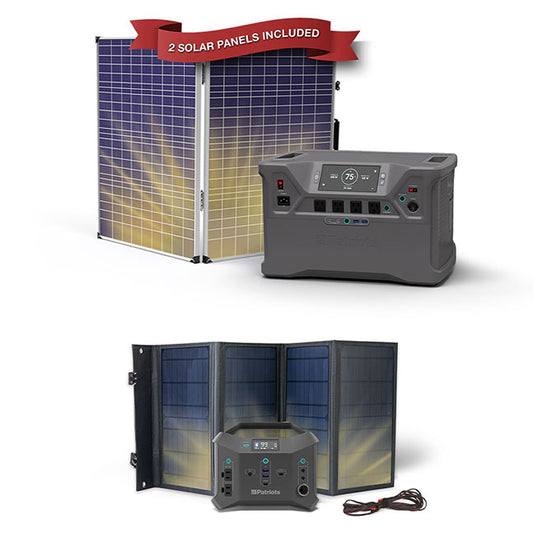



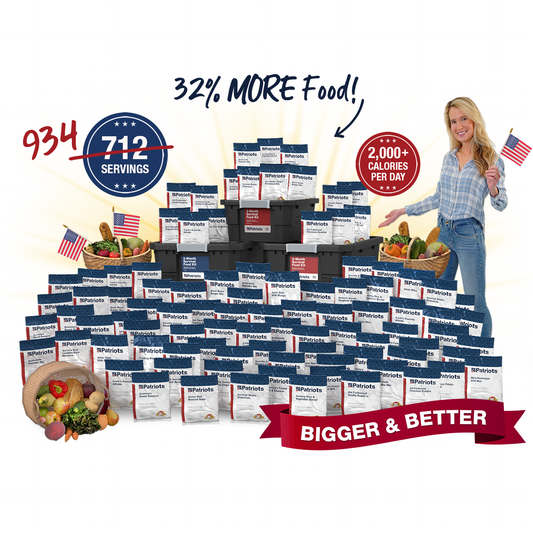
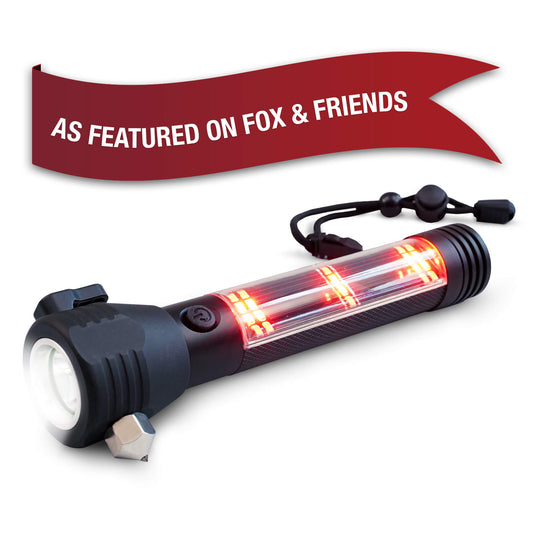

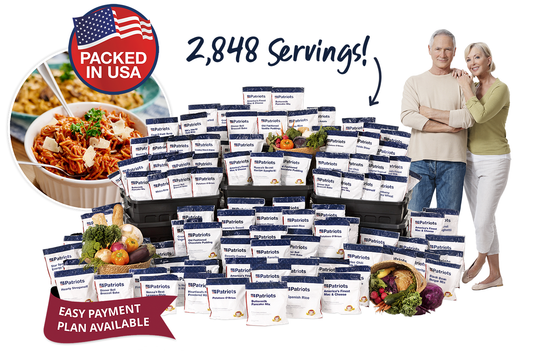
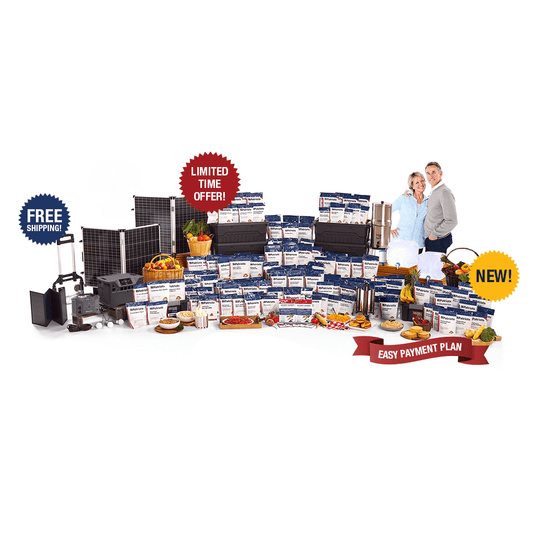
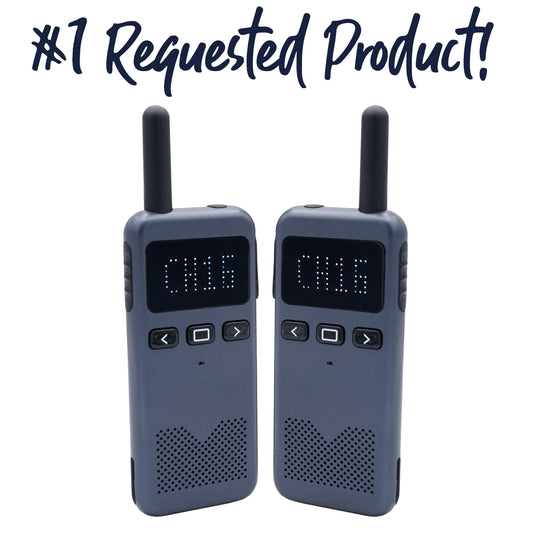
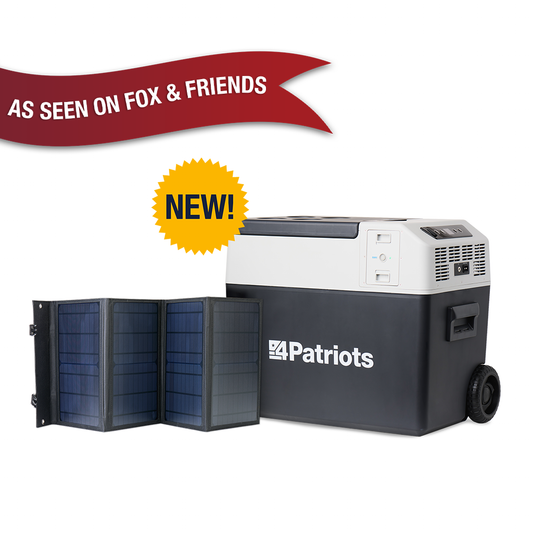
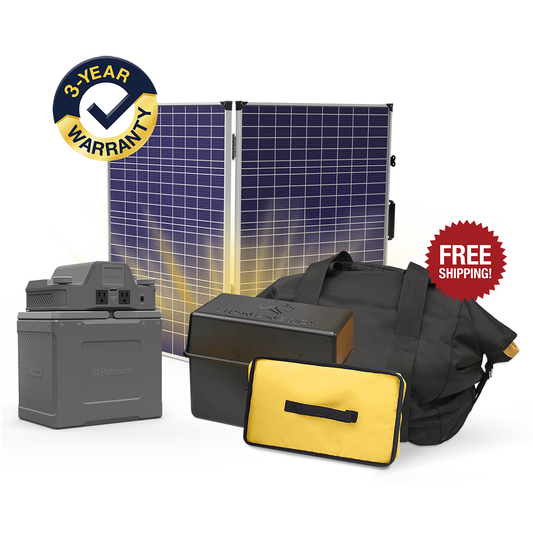
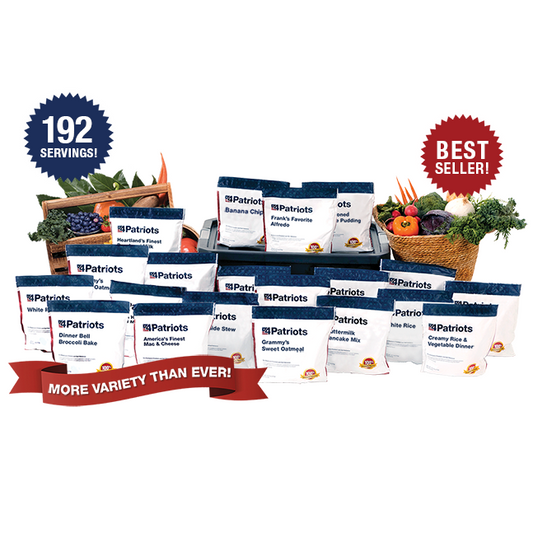
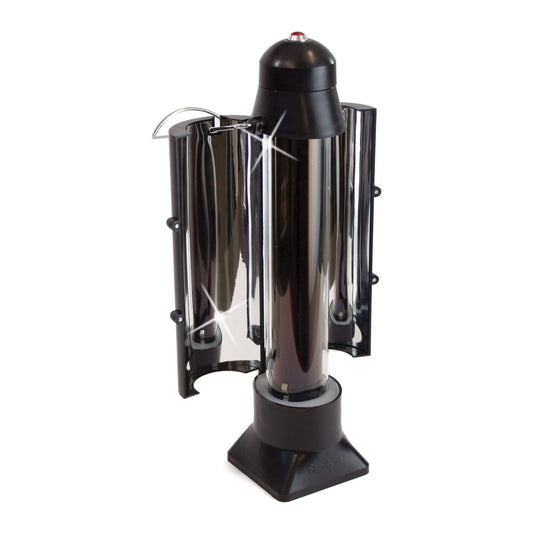
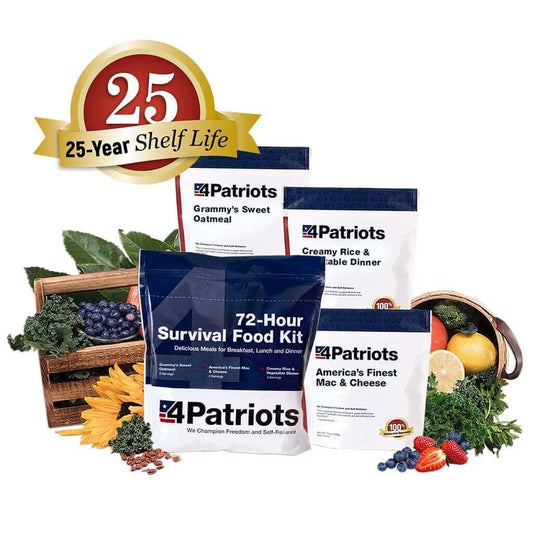




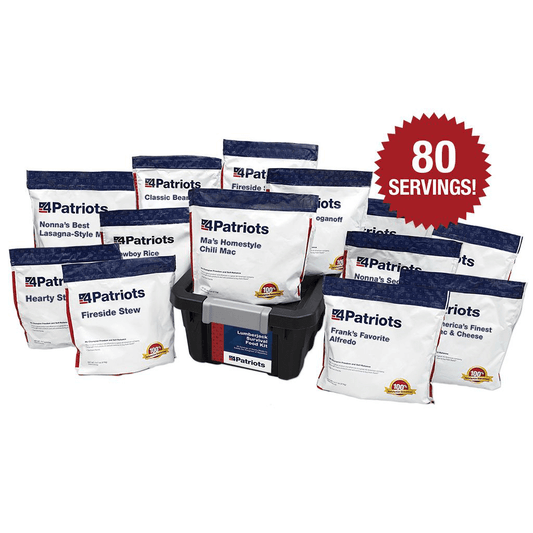


Comments
Paula Moore - March 23, 2020
Hi my name is Paula, I had been storing up food through for Patriots for the past 7 years off and on I was sore again at my moms and she died year ago how old is brother moved in sick everything from me and my sisters. I was going to start getting more food from 4patriots from y’all starting next month because the first of the year it’s really tough when you live on disability I know I can’t do it my refrigerator went down my landlord didn’t bring me one for a week and a half lost all my food that was in it because I was gone overnight didn’t realize it was going out before I left so I wish I was getting my check at now my disability check because all I have now is canned food boxed food no Beats ml oh my bait your food was stolen and my mom’s from my oldest brother when are in chick everything from us kids even the house had a really bad time I live around my family I live alone I just thought I’d let yall know what other people are going through like me. May the Lord be with you all and God bless you. Please put me in your prayers
Novella - March 20, 2020
Marvin Wakefield - March 19, 2020
I like ;your webpage. I am glad I bought two 3 month supplies in June, 2019, where I was forced to leave my job because UNR did not want to help me recover from neurological damage from an on-campus fall in March 2017. Since I have been unemployed since July, it would have been tougher to make my order from December 2019, on.
Best regards,
Marvin Wakefield
ustaxpayer007@gmail.com
Patricia Loyco - March 19, 2020
Thank you for reminding me of these important “rules” with a lot of common sense sprinkled on. I would be happy if my survival food could be thrown away in 25 years. That will mean life has been peaceful. I don’t think that will happen and this weekend I plan to put together delicious meals from my survival foods and in my own kitchen.
Patricia Loyco - March 19, 2020
Thank you for reminding me of these important “rules” with a lot of common sense sprinkled on. I would be happy if my survival food could be thrown away in 25 years. That will mean life has been peaceful. I don’t think that will happen and this weekend I plan to put together delicious meals from my survival foods and in my own kitchen.
Victor B Orona - March 19, 2020
Thank you for the information on the food that really appreciate that a lot thanks again
GAy THompson - March 19, 2020
Just to say Thank You for an order placed, expecting to wait 3-4 weeks for delivery. Was received in less than a week. Thanks again for the fast service. I love 4 Patriots, as will my family when the time comes to open for using.
Frank - March 19, 2020
I have a system similar to the multi-level system described above. I use a Tier System.
Tier I-food that is eaten regularly on a daily basis
Tier II-3 days worth of emergency food bars once Tier I food is exhausted and emergency lasts longer than 7 days
Tier III-1 week’s worth of MREs-extended short term use after Tier II is exhausted and emergency situation is still going on
Tier IV-1 month worth of canned foods w/bulk rice and pasta and basic cooking supplies (powdered butter, sugar, salt, honey, spices, etc.)-intermediate use after Tier I-Tier III is used up and still in emergency
Tier V-1.5 years worth of 4Patriots food to include fruit/veggie/desert kits and meat/protein kits
Tier VI-food from my 4Patriots seed banks that I used to start a permaculture operation once it became clear sometime between Tier III-Tier VI that the emergency was no longer but life as we knew it would never return….
So at any given time I have at least 1.6 years worth of food on hand not to mention water and all the other categories I have covered:
Personal safety/self defense/first aid
Fire/heat/cooling/light/power/cooking
Entertainment
etc.
One is none, two is one and 3 is just enough….so I have backups for my backups and backups for those backups…i.e. for cooking: an inverter and hot plate powered by vehicle battery, camp stove, rocket stove, solar oven and Sun Kettle and a wood stove….
And for each other category I have the same backup schemes..as my dad said “always more than one way to skin a cat!”….now, I’m a cat lover so no hate emails please…:-)